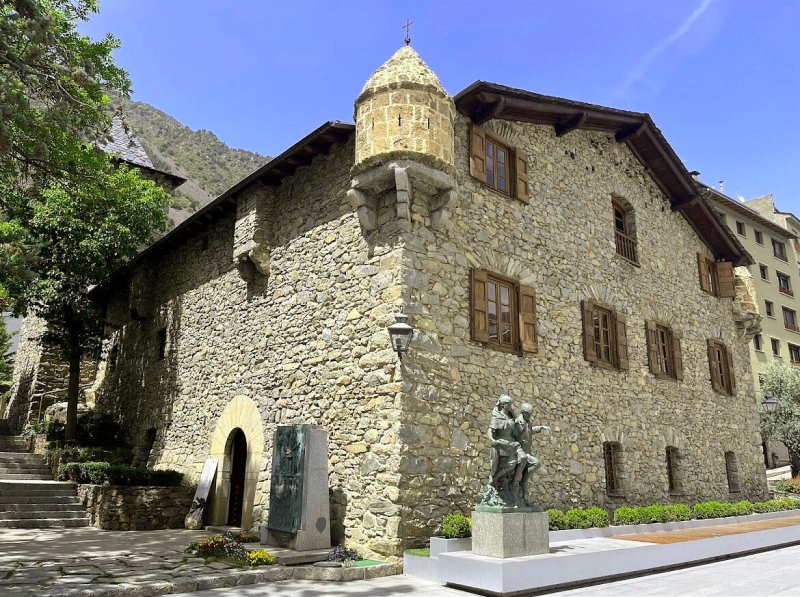WWII Escape Routes Over the Pyrenees – Real Maps, Trails & Stories
WWII Escape Routes Over the Pyrenees: Real Maps, Stories & Crossing Points
Why the Pyrenees Were a WWII Escape Corridor
Andorra and the Catalan valleys played a crucial role as safe transit points. The complex terrain provided cover, but it also brought exhaustion, snowstorms, and capture. Many were arrested or died en route — others made it across, leaving behind powerful stories of survival.
Major WWII Escape Routes Over the Pyrenees
Below are several documented WWII escape routes, each with unique challenges and significance. These routes are now part of the “Persecuted and Saved” project and can be explored by foot or with a knowledgeable guide.
1. Chemin de la Liberté (Freedom Trail)
Starting in Saint-Girons (Ariège, France) and ending in Esterri d’Àneu (Pallars Sobirà, Spain), this 60km trail was one of the most used by Allied soldiers and Jewish refugees. The route includes high mountain passes like Col de la Core and Port de la Pez, and is now one of the most symbolic freedom trails in Europe.
2. Val d’Aran to Alta Ribagorça Route
This lesser-known route crossed from the Aran Valley into the remote regions of Alta Ribagorça. It was used by small groups and involved steep, narrow trails. Safe houses in mountain hamlets provided temporary shelter before final crossings.
3. Alt Urgell and Andorra Crossing
Refugees coming from France often crossed into Andorra through secret mountain paths. From there, they continued into Alt Urgell and the plains of Catalonia. La Seu d’Urgell and the border villages were strategic locations, now preserved in local memory.
4. Banyuls–Espolla–Figueres Route
This route further east brought refugees to the Mediterranean coast. Though flatter, it was more exposed. Jewish families and artists fleeing persecution, including famous names, used this path to reach safety or eventually leave Europe altogether.
WWII Escape Route Map of the Pyrenees
To understand the scale and danger of these escapes, view the historical maps showing the real paths and geography. Many of these routes are now marked with the “Cami De Libertat” signs placed by the provincial government of Lleida. These markers help preserve the memory of those who passed through the region.

Hidden Crossing Points & Real Escape Stories
One poignant story tells of a Jewish mother and daughter who made the crossing barefoot in winter, only to be arrested near the border and detained for weeks. Others recall British airmen rescued by Catalan shepherds after crashing in France.
Walk the Trails Today: From Research to Experience
Visitors can walk real sections of the trail, visit mountain villages, and understand the fear, courage, and determination of those who risked everything for freedom.
Join a Private WWII Freedom Trail Tour
Experience these historic routes for yourself on a private tour. Options include:
- 1-Day WWII Escape Route Tour From Barcelona– Scenic drive and storytelling from Barcelona
- 2-Day Expedition From Barcelona – In-depth discovery with overnight stay
- WWII Freedom Trail Hike From Barcelona – Guided trekking across historical escape paths
Join a Private WWII Freedom Trail Tour
How many people escaped over the Pyrenees during WWII?
Historians estimate that over 33,000 people fled through the Pyrenees, including Jews, Allied soldiers, and political dissidents.
Are the escape routes still marked?
Yes. Thanks to projects like “Persecuted and Saved”, many trails are now marked with signs and information boards along the paths.
Can you hike these WWII freedom trails today?
Absolutely. Some are difficult mountain hikes, while others are accessible by vehicle or with short walks. I offer both options based on your interest and fitness level.
Are the tours suitable for older travelers?
Yes — the driving tours are designed for comfort and accessibility, with minimal walking required unless requested.
Want to follow in their footsteps? Join me for a private WWII Escape Route Day Tour from Barcelona — walk or drive the real trails used by refugees, Allied pilots, and resistance heroes across the Pyrenees.

